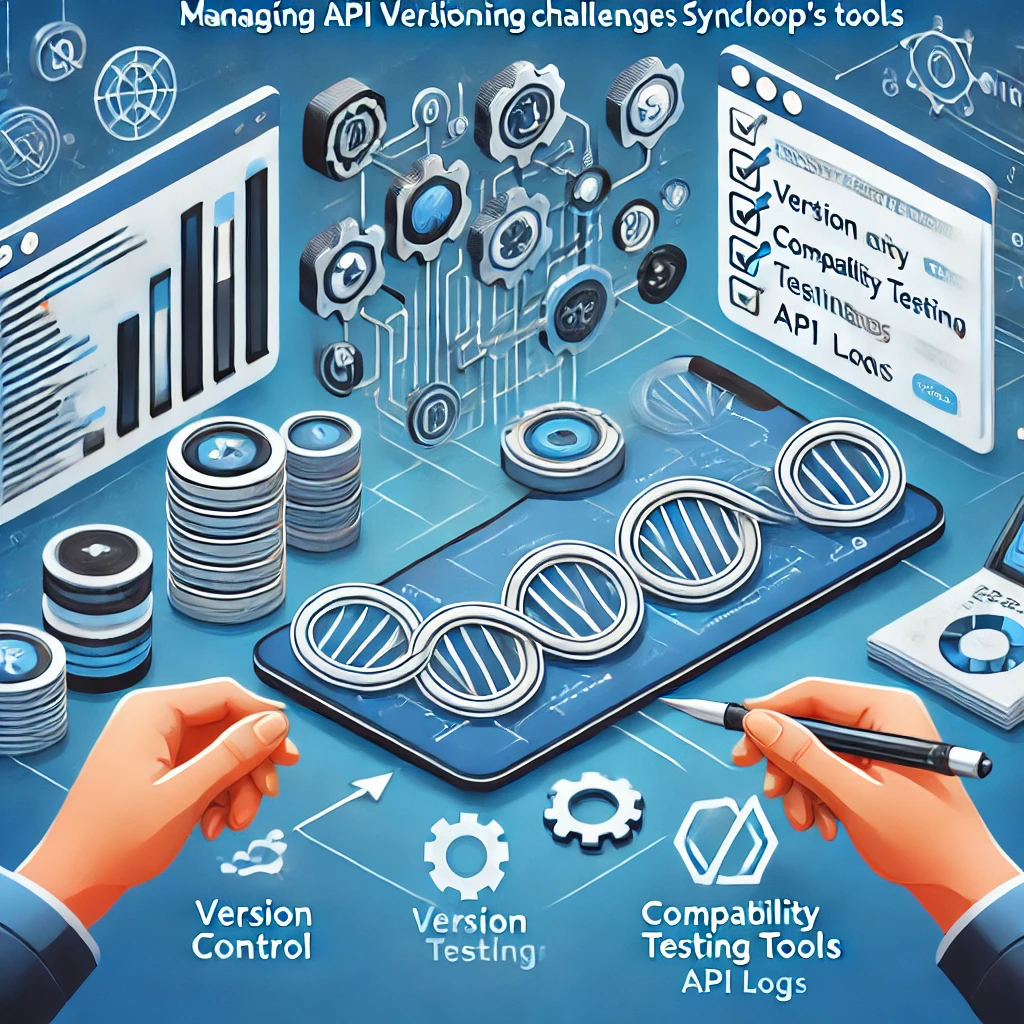Managing API Versioning Challenges with Syncloop’s Tools

Why API Versioning is Important
API versioning is essential for:
- Ensuring Compatibility: Maintain support for existing integrations while introducing updates.
- Managing Deprecations: Phase out outdated features without disrupting users.
- Facilitating Iterative Development: Roll out new features incrementally and test them with specific user groups.
- Improving User Experience: Provide clear versioning to help developers integrate efficiently.
- Supporting Diverse Use Cases: Cater to varying needs of consumers, such as mobile apps and enterprise systems.
Syncloop simplifies versioning management, enabling developers to focus on innovation while ensuring stability.
Common API Versioning Challenges
1. Backward Compatibility
- Ensuring older clients continue to function correctly with updated APIs.
2. Managing Multiple Versions
- Handling multiple active versions simultaneously without confusion.
3. Clear Deprecation Policies
- Informing users about deprecated versions and guiding them through upgrades.
4. Testing Across Versions
- Validating functionality and performance for each version to avoid regressions.
5. Documenting Versions
- Keeping documentation up to date for all versions.
Syncloop provides tools to address these challenges efficiently and systematically.
Key Features of Syncloop for API Versioning
1. Version Control
Manage and deploy multiple API versions with ease, ensuring smooth transitions between versions.
2. Workflow Automation
Automate tasks such as version deployment, testing, and deprecation notifications.
3. Backward Compatibility Checks
Validate that updates do not break existing integrations.
4. Dynamic Routing
Direct API requests to the appropriate version based on client specifications.
5. Real-Time Monitoring
Track usage metrics for each version to identify active clients and plan migrations.
6. Comprehensive Documentation
Generate and maintain version-specific documentation automatically.
Steps to Manage API Versioning with Syncloop
Step 1: Define Versioning Strategy
- Choose a versioning method, such as:
- URL-based (e.g., /v1/resource).
- Header-based (e.g., Accept-Version: v1).
- Parameter-based (e.g., ?version=1).
- Establish clear guidelines for version lifecycles, including release, maintenance, and deprecation phases.
Step 2: Automate Version Management
- Use Syncloop’s workflow automation tools to:
- Deploy new versions automatically based on predefined templates.
- Set up workflows for notifying users about upcoming deprecations.
- Configure version-specific settings, such as rate limits and feature toggles, dynamically.
Step 3: Implement Dynamic Routing
- Configure Syncloop to route API requests to the correct version based on:
- URL patterns.
- Request headers or query parameters.
- Test routing logic to ensure consistent behavior across versions.
Step 4: Monitor and Analyze Version Usage
- Use Syncloop’s monitoring dashboard to:
- Track usage metrics for each API version, such as request volume and error rates.
- Identify active and inactive versions.
- Generate reports to guide decisions on maintaining or deprecating versions.
Step 5: Test Compatibility and Performance
- Automate testing workflows for:
- Regression tests to ensure backward compatibility.
- Performance benchmarks for new versions.
- Validate API behavior in staging environments before production deployment.
Step 6: Manage Deprecation
- Use Syncloop to:
- Notify users of deprecation schedules via automated messages or API responses.
- Provide migration guides and support to help users transition to newer versions.
- Retire deprecated versions systematically to minimize disruptions.
Real-World Applications
1. E-Commerce Platforms
- Challenge: Maintain compatibility for older checkout APIs while rolling out new payment features.
- Solution: Use version control, backward compatibility checks, and automated deprecation workflows.
2. Healthcare Systems
- Challenge: Update APIs for compliance with new regulations while supporting legacy integrations.
- Solution: Implement dynamic routing and detailed version monitoring.
3. IoT Applications
- Challenge: Manage multiple versions of APIs for diverse device generations.
- Solution: Automate version-specific testing and provide clear documentation.
4. Financial Services
- Challenge: Introduce new transaction APIs without disrupting existing clients.
- Solution: Track usage metrics and automate notifications for deprecation timelines.
Best Practices for API Versioning
- Plan Version Lifecycles: Define clear timelines for each version’s release, maintenance, and retirement.
- Communicate Effectively: Notify users early about version changes and provide migration support.
- Automate Processes: Use tools like Syncloop to streamline deployment, testing, and monitoring.
- Maintain Documentation: Ensure all versions are documented comprehensively and accurately.
- Monitor Continuously: Track usage metrics and user feedback to guide versioning strategies.
Why Choose Syncloop for API Versioning?
Syncloop’s robust tools for workflow automation, monitoring, and dynamic routing make it an ideal platform for managing API versioning challenges. Its intuitive interface and advanced features simplify complex processes, ensuring smooth and reliable API updates.
Conclusion
API versioning is essential for evolving applications while maintaining stability and user satisfaction. Syncloop provides a comprehensive platform for managing versioning challenges, enabling developers to deliver seamless and scalable API solutions. By leveraging Syncloop’s tools, organizations can focus on innovation while ensuring compatibility and reliability.
Back to Blogs